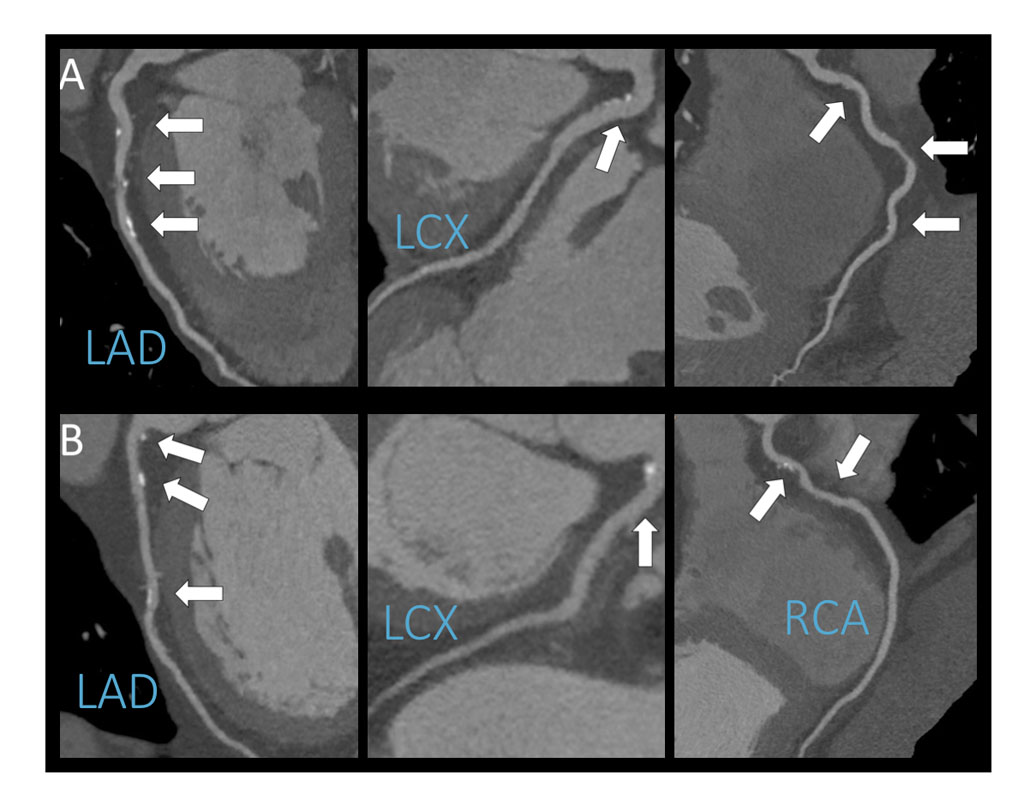No Association Found Between Moderate Alcohol Consumption and CAD
By Andrew Deutsch
Posted on 07 Dec 2016
Researchers have not found any association between alcohol consumption, at light to moderate levels, and Coronary Artery Disease (CAD).Posted on 07 Dec 2016
The researchers used Coronary Computed Tomography Angiography (CCTA) for the study, and presented the results at annual Radiological Society of North America (RSNA 2016) meeting. During their study the researchers tried to find whether there was any link between clinical risk factors, atherosclerosis, and drinking habits of patients.

Image: An example of a coronary CT angiography test for one patient who did not consume alcohol, and one who reported moderate alcohol consumption (Photo courtesy of RSNA).
Previous studies had suggested that light alcohol consumption could reduce the risk for CAD. The researchers studied alcohol consumption and the type of alcohol consumed, and used CCTA to look for coronary plaques. The study included 1,925 consecutive patients who had been referred for CCTA scans, for suspected CAD.
The results showed that alcohol consumption was neither harmful nor protective for cardiac arteries, and that the amount consumed was not related to CAD. The researcher found no association between different types of alcohol and coronary atherosclerosis.
The author of the study, Júlia Karády, MD, Semmelweis University (Budapest, Hungary), said, "CCTA is an excellent diagnostic modality to noninvasively depict the coronary wall and identify atherosclerotic lesions. Furthermore, we're able to characterize plaques and differentiate between several types. Prior studies used cardiovascular risk factors – like high cholesterol levels – and cardiovascular outcomes to study the effects of alcohol, but our study is unique in that we analyzed both drinkers and non-drinkers using CCTA, which may shed some light on how alcohol may or may not contribute to the development of fatty plaques in the arteries of the heart. About 40% of our patients reported regular alcohol consumption, with a median of 6.7 alcohol units consumed weekly. When we compared consumption between patients who had coronary artery plaques and those who had none, no difference was detected. Evaluating the relationship between light alcohol intake (maximum of 14 units per week) and presence of CAD, we again found no association. Furthermore, we analyzed the effect of different types of alcohol (beer, wine and hard liquor) on the presence of CAD, but no relationship was found."
Related Links:
Semmelweis University













